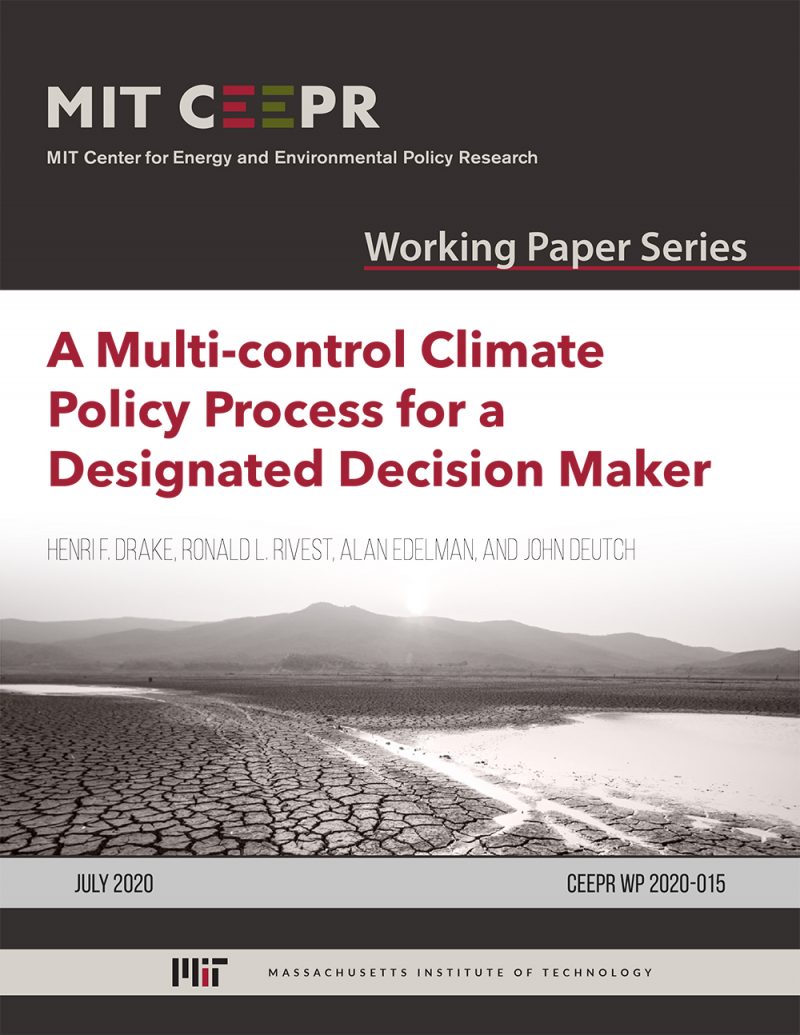A Multi-control Climate Policy Process for a Designated Decision Maker
Henri F. Drake, Ronald L. Rivest, Alan Edelman, and John Deutch
July 2020
Persistent greenhouse gas (GHG) emissions threaten global climate goals and have prompted consideration of climate controls supplementary to emissions mitigation. We present an idealized model of optimally-controlled climate change, which is complementary to simpler analytical models and more comprehensive Integrated Assessment Models. We show that the four methods of controlling climate damage—mitigation, carbon dioxide removal, adaptation, and solar radiation modification—are not interchangeable, as they enter at different stages of the causal chain that connects GHG emissions to climate damages. Early and aggressive mitigation is always necessary to stabilize GHG concentrations at a tolerable level. The most cost-effective way of keeping warming below 2°C is a combination of all four controls; omitting solar radiation modification—a particularly contentious climate control—increases net control costs by 31%. At low discount rates, near-term mitigation and carbon dioxide removal are used to permanently reduce the warming effect of GHGs. At high discount rates, however, GHGs concentrations increase rapidly and future generations are required to use solar radiation modification to offset a large greenhouse effect. We propose a policy response process wherein climate policy decision-makers re-adjust their policy prescriptions over time based on evolving climate outcomes and revised model assumptions. We demonstrate the utility of the process by applying it to three hypothetical scenarios in which model biases in 1) baseline emissions, 2) geoengineering (CDR and SRM) costs, and 3) climate feedbacks are revealed over time and control policies are re-adjusted accordingly.
*For those interested, the MARGO model is built on the powerful Julia programming
language that is open access and easy for interested persons to explore different functional relationships and parameter values. It is available at:



